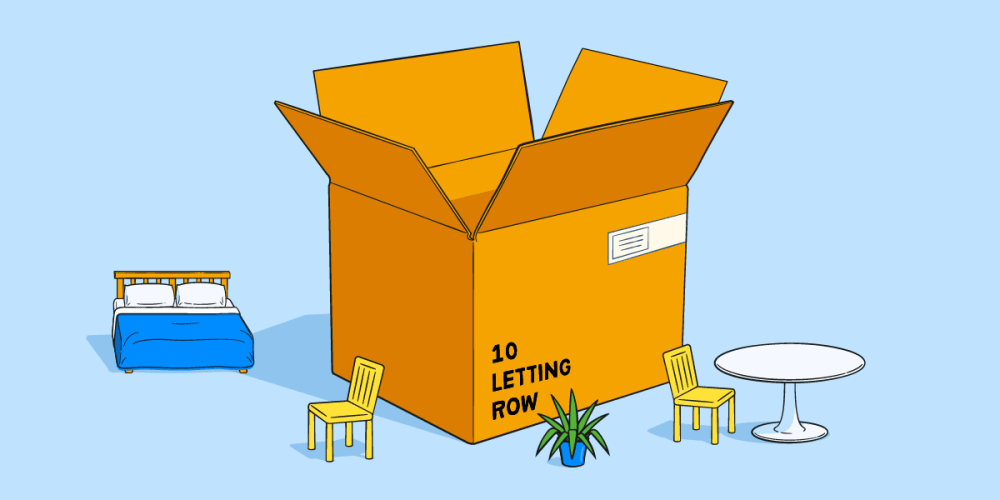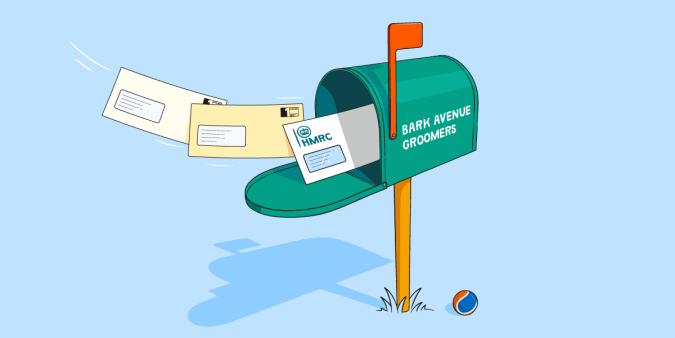Letting property: should you choose furnished or unfurnished?

Too often, the fizz of a successful property purchase is followed by the unpleasant chaser of difficult decisions. There are a lot of choices to make, including whether to furnish your new property before you look for tenants.
We’re here to help with a quick round up of the pros and cons of letting a furnished or unfurnished property, plus an overview of the tax differences you’ll need to consider.
What’s the difference between a furnished and unfurnished property?
A furnished property should contain the majority of furniture and appliances needed to live there - including all white goods and fixtures, beds for each bedroom, sofa, dining table, kitchen appliances, kitchenware… You get the gist.
An unfurnished property should contain white goods and fixtures, but may not have furniture or furnishings - the tenants would bring these when they move in, and remove them when they move out.
Furnished or unfurnished: which is better?
Pros of letting a furnished property
- You can usually charge more rent for a furnished property - you’re literally providing more for your tenants!
- You can claim some tax relief when replacing furniture
- Your property is unlikely to be sitting empty for long, as the move-in process is faster for tenants who don’t have to transport furniture
- Your property will attract tenants like students and young people, opening your property up to a wider tenant market
Cons of letting a furnished property
- You’ll likely have higher initial set-up costs as you’ll need to purchase furniture
- You might need to remove (and possibly store) furniture for tenants who want to bring their own furniture
- Your property inventory will be longer and more complicated to check when tenants move out
- You’ll be responsible for making sure all electrical goods have passed their portable appliance tests (PAT) for safety - you will need to PAT test some white goods in unfurnished properties, but not as many
- You’ll also need to check that any furniture in your property is fire-resistant - any furniture you buy should have a permanent label that complies with BS7177, even if you buy it second-hand
Pros of letting an unfurnished property
- You’ll likely have lower upfront costs as you don’t need to furnish the property
- Tenants are likely to stay longer because moving with all their furniture is harder (and often more expensive)
- You don’t have to keep track of furniture using an inventory - you still might need an inventory but it’ll be much shorter
- You aren’t responsible for replacing broken or old furniture, as it belongs to your tenants
Cons of letting an unfurnished property
- You probably can’t charge as much rent for an unfurnished property as you are providing less for your tenants
- It may limit your potential tenants as some types of tenant won’t be able to furnish a full property
Ultimately, you might end up deciding based on the location of your property. You will probably need rent-paying tenants in your property most of the time to make a profit, so you might need to research what kind of properties do well in your area.
If your property is in a very ‘studenty’ area, a furnished property might be easier to fill with students and young people who don’t normally own much furniture. On the other hand, in quieter areas popular with families, an unfurnished property might prove ideal for people who have built up their own collection of furniture over the years.
Tax implications of letting a furnished property
Generally, tax is calculated very similarly for furnished and unfurnished properties. The only exception is furnished holiday lets - until 6th April 2025, when the difference will no longer apply. However, there is some difference in the tax relief you can claim on a furnished property, as you may be able to claim for the cost of replacing old or broken furniture as a landlord.
To be eligible for this relief, the following conditions apply:
- You must be letting out property for a profit
- The item being replaced must be for the exclusive use of the tenants in that property
- The original item cannot still be available for use by the tenant
- The item must be ‘wholly and exclusively’ purchased for use in your rental property
- You must not have claimed capital allowances on the replacement item
- You must not have claimed Rent-a-Room relief (tax-free earnings from letting out one or more furnished rooms within your main home) on the property
- The item must be a domestic item i.e. furniture, furnishings, white goods/appliances, kitchenware
- The item must not be a fixture i.e. sink, toilet, kitchen units, boiler
As long as the item replacement isn’t an improvement on the original item purchased, you can deduct the cost of the new item in full. You can also deduct costs involved in replacing the item, like disposal of the old item or delivery and installation of the new item.
If you’re not replacing like-for-like, and the new item is of higher standard or quality than the original item, then you cannot deduct more than the cost of replacing the item to the same standard. And if you sold the original item second-hand, you’ll need to subtract the amount you received from the cost of the new item before claiming relief.
For example, say you were replacing a basic washing machine in the property after eight years that you originally bought for £200. If you replaced it with a new washing machine that cost around £200 (you can adjust for appropriate inflation), you could add the full cost to your allowable expenses.
If you decided to upgrade the washing machine to a washer dryer that cost £500, you could only claim £200 of the £500 you spent.
The decision to furnish your property shouldn’t have any impact on your Council Tax. Your tenants are usually responsible for paying Council Tax. However, you will be responsible for paying if your property is unoccupied at any time.
Some local councils offer a discount on your Council Tax bill if your property is empty for a short time - check your local council’s website as each may be different. We have more information about Council Tax in our blog.
Sort out your property tax with FreeAgent for Landlords
Keeping on top of your tax obligations while managing your properties isn’t easy. FreeAgent can smooth it all out, auto-populating much of your Self Assessment as you record your income and costs against each property. Then, when you’re ready, you may be able to submit your return directly to HMRC. Try FreeAgent for free and discover how much easier it could be.
Disclaimer: The content included in this blog post is based on our understanding of tax law at the time of publication. It may be subject to change and may not be applicable to your circumstances, so should not be relied upon. You are responsible for complying with tax law and should seek independent advice if you require further information about the content included in this blog post. If you don't have an accountant, take a look at our directory to find a FreeAgent Practice Partner based in your local area.


